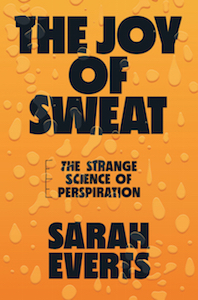
A Brief History of Perfume: Visiting an Archive of Ancient Scents
Sarah Everts on the Human Need to Smell Good
For most of human history, we’ve used perfume to modify the scent of our bodies. When I say “our,” I mean our wealthy predecessors: Most historical documentation reports on the lives of the rich and powerful. And the rich certainly enjoyed a perfumed past.
Depending on the era and the location, we occasionally bathed our bodies before scenting them. But humans have consistently lobbed on perfume to overwhelm our body’s odors. Wearing perfume wasn’t just about fooling others about our own stink. Humans have also worn perfume as protection, as a scented distraction from the malodor of others and also as a prophylactic barrier from disease, which was long thought to be spread by bad air. Perfume kept in jeweled rings and pendants could be brought to the nose when accosted by unpleasant smells; it formed an aromatic wall.
Among the most enthusiastic perfumers in antiquity were the ancient Egyptians. At the Louvre in Paris, there is a delightful Egyptian limestone relief from around 600 BCE that depicts bare-breasted women harvesting lilies in a garden overrun with flowers as tall as themselves. Other women wrap the lilies in cloth and twist the textile around two sticks above an enormous vessel, likely to squeeze out the oil or water used to extract the flower’s scent. Further along the carved relief, the completed perfume is presented to Païrkep, a nobleman of the Twenty-Sixth Dynasty.
The Egyptians didn’t enjoy just the aroma of lilies; they wore all manner of scents: rose, cinnamon, parsley, lemongrass, myrrh. They even concocted complex perfumed mixtures such as kyphi, whose 16 ingredients, including raisins, frankincense, myrrh, pine, honey, wine, and juniper berries, were ground in a mortar, soaked in wine, and/or heated to produce a thick, pungently sweet paste. It was applied and consumed to combat lung and liver disease or put on hot coals as an incense to produce a smoky fragrance. “When we think of perfumes today,” writes cultural historian Constance Classen, “we inevitably imagine them as liquids. An inhabitant of the ancient world would be just as likely to enjoy perfume in the form of a thick ointment, to be smeared liberally on the body, or a fragrant smoke, infusing the air with its odor. Our own English word ‘perfume,’ in fact, literally means ‘to smoke through,’ indicating the importance this method of imparting fragrance had for our ancestors.”
The Egyptian predilection for perfume was likely shared with or inspired by the Sumerians, the early Bronze Age civilization situated where Iraq and Kuwait are now. The Egyptians also shared their fragrant recipes around the Mediterranean coast: At the town of Pyrgos, in Cyprus, archaeologists have uncovered a 4,000-year-old perfume factory, where workers used olive oil produced in a nearby mill to extract the scent of fragrant plants. The prodigal use of perfume around the Mediterranean is epitomized in the writer Antiphanes’s description of a wealthy fourth-century BCE Greek man:
[He] steeps his feet
And legs in rich Egyptian unguents;
His jaws and breasts he rubs with thick palm oil,
And both his arms with extract sweet of mint;
His eyebrows and his hair with marjoram,
His knees and neck with essence of ground thyme.
During the Roman Empire, perfume continued to infuse all aspects of (wealthy) life. Thanks to sophisticated Roman plumbing, fragrances were sometimes released from ceiling sprinkler systems during elaborate banquets to complement different courses, and individual dishes were also spiked with perfume. There are still fragrant dishes to be found in the Mediterranean region—pastries drenched in honey and rosewater (or honey and orange water) that hearken back to bygone eras when the plates were just as perfumed as the people.
In addition to the famous French palace, the city of Versailles is home to a fascinating archive of historical perfume. The Osmothèque is nestled in an unassuming part of town, a short taxi ride from the castle’s resplendent grounds. Visitors can sniff perfumes worn by first-century Roman Empire elite and the protective fragrances used by French thieves who robbed plague victims without succumbing to the disease themselves. They can also inhale popular plebeian scents from bygone eras.
In the Osmothèque’s display room, there are wall-to-wall vessels of perfume from past centuries: bottles reminiscent of sculptures, many crafted from fine crystal or pigmented glass sculpted into elaborate birds or flowers or figurines. According to perfume historian Eugénie Briot, the bottle itself is often more costly than the liquid it contains—even today.
The Osmothèque’s founder, retired perfumer Jean Kerléo, searched historical archives for ancient perfume recipes so that he could re-create them in a laboratory. Kerléo is the mastermind behind several blockbuster perfumes, including Sublime and 1000. As head perfumer for the French company Jean Patou, he also designed perfumed gifts for visiting VIPs, invented a sporty fragrance line for Lacoste, and created the signature fragrance for Japanese designer Yohji Yamamoto. Before his retirement, Kerléo began to re-create some of the company’s first perfumes for posterity because they had no odor archive of early fragrances. People were so delighted to smell the historical scents, Kerléo tells me, that he was further inspired to re-create more historical perfumes and to begin archiving existing perfumes from a multitude of fragrance companies. “Fashion designers go to textile museums to get inspired by the past. There was no place like this for perfume,” Kerléo explains.
Humans have consistently lobbed on perfume to overwhelm our body’s odors.
Kerléo, wearing a black turtleneck and tailored taupe sports jacket, shows me around the Osmothèque’s perfume archive and laboratory, which everyone refers to as the wine cellar. That’s because most of the institution’s 4,500 fragrances are stored in temperature-controlled wine fridges. The perfumes are removed from their fancy bottles and placed in brown glass jars to prevent light penetration, which can degrade fragile odor molecules. To further protect these rare perfumes, the jars are pumped full of the noble gas argon so that the liquid surfaces don’t have any contact with oxygen in air, which also has a tendency to destroy fragile scent molecules.
“You might find this interesting,” Kerléo says, and shows me a bottle of natural beaver musk, extracted from the animal’s anal scent sac—it reminds me of leather and birch wood but sweeter. Most musk present in modern perfumes is entirely synthetic, he explained, given that the natural version is too costly. Furthermore, the invasive procedure required to extract the liquid from rear-end glands of beavers, deer, and the exotic civet cat is restricted as part of animal protection efforts.
Because the Osmothèque is an archive, the institution is also allowed to stock ingredients that are now legally prohibited in some countries for use in modern perfume. One such example is natural eugenol, a clove extract that can cause allergic reactions on some skin. “We can use forbidden ingredients to re-create perfumes because people will come and smell [on a sample stick] but won’t put the scent on their skin,” he adds.
One of the first scents Kerléo re-created is among Osmothèque’s most venerable: a first-century perfume, the recipe for which was partially recorded by the Roman intellectual Pliny the Elder. It was called Royal Perfume, because it was a fragrance worn by Parthian royalty, who hailed from the region around modern-day Iran. “So it seemed appropriate to give the exiled [Iranian] empress Farah Diba Pahlavi a bottle of this perfume when she came to France,” Kerléo tells me off-handedly as he passes me a sample.
I close my eyes and inhale. It is as if I have been swept into a Catholic church’s linen closet, the air plush with the odor of incense-laden textiles—a potent reminder that the Christians borrowed their religious odors from more ancient practices. Mixed into the dense odor of incense is the smell of apple crumble, as if someone had spirited the dessert into my Catholic closet. Odors of cinnamon and cardamom mix with the scent of incense so that I feel both hallowed and hungry at the same time. “Oh my,” I mumble. “It’s religious and delicious. I didn’t expect perfume to remind me of food.”
“That’s actually intentional,” Kerléo speculates. “During the Roman Empire, the elites never woke up early. When they did get out of bed, they went to the therme to bathe. Then slaves brought them clean clothes to prepare for the best part of the day: lunch. Then they ate and relaxed.” Perhaps, he says, these elites wore perfume “not just to smell nice, but to remind them of the food they were about to eat, in order to develop an appetite.”
When Kerléo re-created the recipe, he had to rely on his experience as a perfumer. Pliny the Elder’s recipe had listed 27 ingredients but failed to mention the relative quantities to use. “It was probably so obvious to perfumers at the time how to make this that they did not require extensive instructions.” Like a cook making a favorite recipe, ancient perfumers just needed a basic list so that, you know, they wouldn’t forget to add the myrrh rockrose. Or the saffron, lemongrass, lotus, marjoram, honey, wine, or the three types of cinnamon from Ceylon, China, and Arabia. To source ingredients for the Royal Perfume, Kerléo had to depend on botanists to help him track down obscure ingredients—such as Syrian bulrushes and Somalian ben-nuts, which are harvested from the pods of drought-resistant Moringa trees in the Horn of Africa. Kerléo also had to learn ancient fragrance-extraction techniques—most modern-day perfumers don’t macerate nuts and then set them out in the sun to mature. It took Kerléo two years to re-create the 2,000-year-old perfume recipe, which he is careful to call “an interpretation” because it required so much improvisation, however historically informed.
We sniff through some of Kerléo’s other re-creations—a scent supposedly worn by a fourteenth-century Hungarian queen, which merchants peddled as an elixir of youth because she lived to the (then) unusually old age of 75 and had married a much younger man. Her fragrance capitalized on the arrival of alcohol distillation, a tenth-century Arab discovery (“alkohol”), to Europe. Distilled from wine, alcohol was (and is) an ideal vector for many plant-extracted scents. The Hungarian queen’s perfume smells of an herb garden, as if she had kept a sprig of rosemary in her bosom at all times. The perfume was also used medicinally by people with rheumatism, Kerléo says. “Wearing something based in alcohol probably warmed joints and helped with the pain.” We also inhale an ad hoc version of Eau de Cologne, made by a valet for Napoleon, who ran out of his favorite citrusy perfume when he was in exile on the remote island of St. Helena in the South Atlantic Ocean. Napoleon couldn’t get a refill from the Cologne, Germany, thousands of miles away. Daily ablutions die hard, especially in exile.
It’s as if my olfactory system is an unused muscle that has just been asked to dead-lift 200 pounds. My sense of smell isn’t just tired, it’s lying on the ground, limp and unresponsive.
“I would guess you are also interested in the perfume worn by the four thieves,” Kerléo says. As the story goes, sometime during the plague era (which traversed the thirteenth to the seventeenth centuries), four notorious thieves stole jewelry and money from people who were sick or dying from the infectious disease. What made the particularly unscrupulous thieves famous—apart from the volume of valuables stolen—was that they managed to steal from victims without succumbing to the plague themselves. When they were finally caught by authorities, the thieves were condemned to death. But they were given a choice, Kerléo explains. “Death by torture, or a rapid death if they shared their secret for avoiding infection.” That secret was the perfumed mixture they wore during their macabre activities, le vinaigre des quatre voleurs, or “Vinegar of the four thieves.” Kerléo hands a sample over to me.
The sharp odor of vinegar makes my nostrils tingle. Along with the slight burning sensation, I am hit with a strong scent of fresh mint and other green herbs. The plague defense smells like a delicious salad dressing. I laugh. “How could this protect anyone from the plague?” It does seem unlikely, Kerléo responds, “but you can imagine that vinegar might have some antiseptic properties.”
But of course! Wearing vinegar is an ingenious way to overwhelm any miserable odor—be it your own or the stink of bodies you are burglarizing. Even today, many people turn to concentrated vinegar as a household cleaner and air-freshener. It achieves both these ends for the same reason: because vinegar can kill bacteria, odor-causing or otherwise. The thieves were clever in their formulation, even though it is unlikely they could have explained why it might have worked. Several centuries would pass before scientists discovered the existence of small microbial life-forms and their role in infectious diseases. But the thieves were prescient: Disinfectant vinegar in their perfume might have killed the plague pathogens, but more importantly, disinfectants would be key to the future of modern-day anti-stink technology.
I suddenly feel like my nose has hit peak perfume. It’s as if my olfactory system is an unused muscle that has just been asked to dead-lift 200 pounds. My sense of smell isn’t just tired, it’s lying on the ground, limp and unresponsive. Suddenly I understand why Kerléo had demurred when I asked him what perfume he wears: “I keep the scents on my person to a minimum,” he had said. If you spend your days working with odors, it’s unwise to overtax your own nose with odors on yourself. I thank Kerléo for the aromatic time-warp, step out into the crisp winter air, and inhale slowly and methodically. The olfactory silence is pure relief.
___________________________________________________

Excerpted from The Joy of Sweat: The Strange Science of Perspiration. Copyright © 2021 by Sarah Everts. Used with permission of the publisher, W. W. Norton & Company, Inc. All rights reserved.
Sarah Everts
Sarah Everts holds a master’s degree in chemistry, and has written for Scientific American, Smithsonian, New Scientist, and the Economist. She teaches journalism at Carleton University and lives in Ottawa, Canada.












